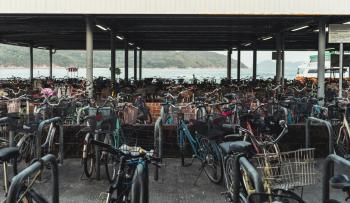
Vital piece in the jigsaw of lorry blind spot reduction legislation falls into place.
In 2009 in London Kate Cairns’s sister Eilidh was killed while cycling after a large tipper truck ran her over. The driver said he did not see her. In the aftermath of this tragic event, Kate set up a campaign called See Me Save Me in order to improve the safety of trucks and in particular to improve the blind spot of lorries in the city.
Despite updated legislation to improve safety requirements due to efforts such as the See Me Save Me campaign, is progress still taking the backseat?
Her campaign in the UK, it is fair to say, culminated in the CLOCS programme that Transport for London put in place that requires trucks entering the city to have better Direct Vision.
But it also had repercussions for European vehicle regulations.
We, and other civil society NGOs, worked with Kate in providing input into the European Weights and Dimensions directive which started in 2015 and culminated in 2020, which also had a safety component to only allow changes to lorry dimensions at the front of the truck if they also improved aerodynamics and safety.
Then in 2019 the European Union passed an important piece of legislation, the General Safety Regulations (GSR), that updated the safety requirements that all motor vehicles must pass in order to be sold in the single market.) This was a hard-fought battle with the industry aggressively pushing for less strict safety rules. A core of civil society NGOs ETSC, T&E and ECF supported the EU institutions. Cities also got involved pushing their capitals to improve lorry/truck safety designs, and, kudos to the European Institutions for sticking to their guns, a progressive list of vehicle safety requirements were placed into the Official Journal of the European Union as an EU Regulation.
This legislation included Intelligent Speed Assistance, Autonomous Emergency Braking, and a host of other safety improvements, many of which were specifically targeted to improve the safety of those outside the vehicle; and this included reducing the blind Spot of lorries/trucks by improving the Direct Vision from the cabs. The lead in time given to the industry was that by the end of 2028 all new trucks cabs would have to pass stricter Direct Vision requirements.
But the story does not finish there. The specific requirements of what a ‘Direct Vision requirement’ should look like, the volume of space around the cab that the driver can see, and the very specific testing requirements that the vehicles must undergo, still had to be laid out. The GSR legislation said it would leave that to UNECE (the United Nations Economic Commission for Europe) to complete in order to have global standards for the industry that could be implemented by other parts of the world if they so wish. So off we all went to Geneva.

What should have been a straightforward scientific procedure to provide objective testing requirements and procedures for these vehicles was of course another hotly contested field of lobby activity with the industry again pushing back against requirements that would mean investments in improving the safety of their vehicles.
However, member state contracting parties of the UNECE have spoken and regulation 167 was finalised and published. The result is of course not perfect. There will be Blind Spots, but there will be significant improvements in what the driver can see outside their windscreen.
So, what does this mean for the Direct Vision of lorries/trucks, buses and coaches?
The trucks will be split into three types; urban delivery trucks, buses & coaches; construction trucks most used in cities; and long-haul highway/motorway trucks. Those urban delivery trucks which are ever present in urban areas, and with smaller powertrains that make it easier to provide a better direct vision, will have to eliminate almost completely the Blind Spots (when also including the mirrors).
The larger and more powerful motorway trucks would not be able (according to the manufacturers) to improve the vision to such an extent due to the larger powertrain. Motorway trucks are also less used inside urban areas and so the field of vision is 60% of the urban access vehicles. The construction trucks are somewhere in the middle. The lead in time will be the end of 2028 for all new trucks to comply with the Regulation.
Truck design in Europe has been based on the same design since the 1980’s. There has been little improvement of the design of the cabs to allow drivers to better see outside their windscreens. Like most vehicle safety features, it has only been through regulation that the EU fleet of vehicles will have a much-needed safety update. Finally with this legislation in place trucks will have to improve their Direct Vision, we hope this will have a real impact on the numbers of cyclist and pedestrian fatalities across Europe.
Contact the author
Recent news!
Upcoming events
Contact Us
Avenue des Arts, 7-8
Postal address: Rue de la Charité, 22
1210 Brussels, Belgium









